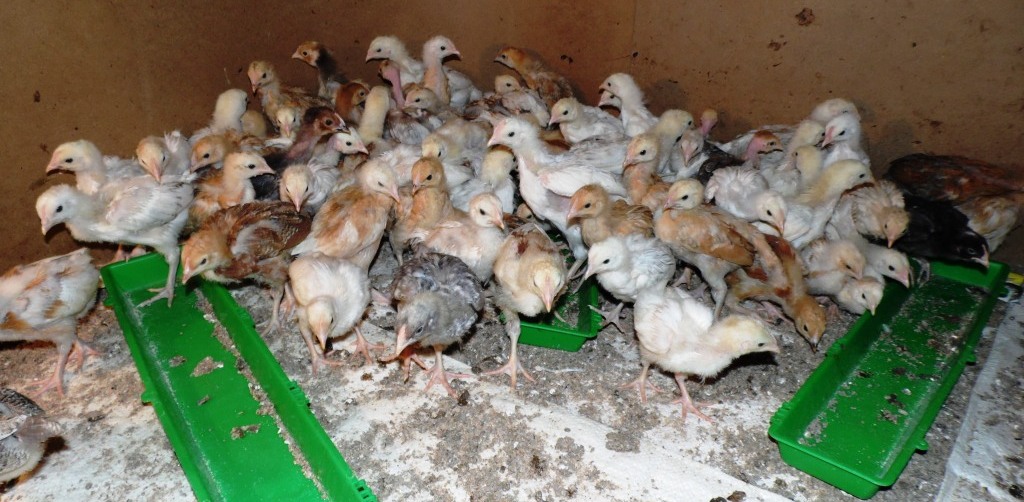
Four young farmers have been advised on best farming practices, financial management, niche marketing and value-addition.
By Vanessa Mukhebi, Mediae
More than 3 milion East African farmers are set to benefit from a television show named “Don’t lose The Plot” courtesy of The Mediae Company. The show aims to promote agribusiness and ensure the youth change their mindsets towards agriculture.
The show began airing on Citizen TV Kenya and ITV Tanzania from 30th April 2017 and concluded a few weeks ago on 3rd August 2017. The show was a competition which involved four farmers from Kenya and Tanzania and was supported by several development organizations with the aim of encouraging the youth to venture into agribusiness.
According to the Food and Agricultural Organization of the United Nations (FAO), the average age of farmers in Africa is about 60 years, despite the fact that 60 per cent of Africa’s population is under 24 years of age. Small scale farmers form the bulk of this population.
It doesn’t take a great leap of the imagination to discern that there is a lackluster perception of agriculture amongst young people. Whilst there are several push factors such as limited access to capital and land, for majority of the world’s youth, agriculture isn’t considered as a viable or ‘cool’ career venture.
With an ageing population of farmers, the uptake of agriculture by this demographic is critical in ensuring food security in the years to come.
The four farmers, Leah, Issah, Winrose & Kenneth were each given one acre plots to farm side-by-side for a growing season, competing to win an agricultural investment worth US $10,000.
All four contestants were unemployed and most of them assisted their parents with farm work back home. Not having a prior commitment, such as work or schooling was crucial for the show, so that the contestants were able to fully commit for nine months, without any distraction. All four farmers lived on the Don't Lose the Plot (DLTP) farm located in Kamangu, Kenya during the entire 9 months period.
The contestants were required to do research and choose what crops to grow and livestock to rear, and then pitch their ideas and budgets to the judges before receiving loans for their farm inputs.
Throughout the nine month period, the four have learnt to get their hands dirty under the guidance of various experts in the agriculture sector, advising them along the way on best farming practices, financial management, niche marketing and value-addition.
READ ALSO: Africa’s Growth lies with Smallholder Farmers
READ ALSO: Seeds, not Diamonds, will Make Africa Great
READ ALSO: Prioritise agriculture for development, Africa governments urged
Winrose engaged in broiler chicken farming, potatoes, kales, spinach, onions, butternut and cabbage farming. Issah took part in broiler chicken farming, spinach, kales, butternut, tomatoes and cabbage farming. Ken on the other hand practiced dairy cow farming, cultivated onions, coriander, kales and spinach while Leah planted tomatoes, potatoes, mushroom and capsicum.
The contestants sold their produce throughout the competition, during two growing seasons. They had been given ample information on marketing prior to selling their produce, and they were advised by the experts to look for market before they began farming, which they all did, so they sold their crops immediately after harvesting. They went and looked for buyers on their own by visiting vegetable markets, hotels and neighbors.
Winrose, the female contestant from Tanzania was the ultimate winner of the agricultural investment and has used a portion to purchase a dairy cow and several flock of kienyeji chicken. She also grows Irish potatoes. Through the sale of her milk, meat and eggs, she has managed to become self-employed and has a stable income. In so doing, she's become independent from her parents, and has used the farming knowledge she gained during the competition, to improve her farming methods as well as pass on that knowledge to others.
Still, the journey to success has been marked with a set of challenges. From overly ambitious budgets to disease-stricken crops, but as Ken, one of the contestants put it, “success is not an instant coffee affair.”
The show “Don’t Lose the Plot” is watched by over three million viewers in Kenya and Tanzania. “The show has given audiences the opportunity to learn from the contestants’ mistakes and triumphs, emulate them, and be inspired to own, lease and run agribusinesses of their own.” Noted Patricia Gichinga, the producer of the show
The learning experience has largely been aided by Budget Mkononi, the show’s web-based agricultural budgeting tool that helps aspiring and inexperienced farmers view estimated costs and revenues of various commodities. They are then able to edit costs to reflect their specific circumstances, so that their budgets are realistic and personalized. Thus, allowing viewers at home the opportunity to become farming heroes of their own.
Write comment (0 Comments)




.jpg)













